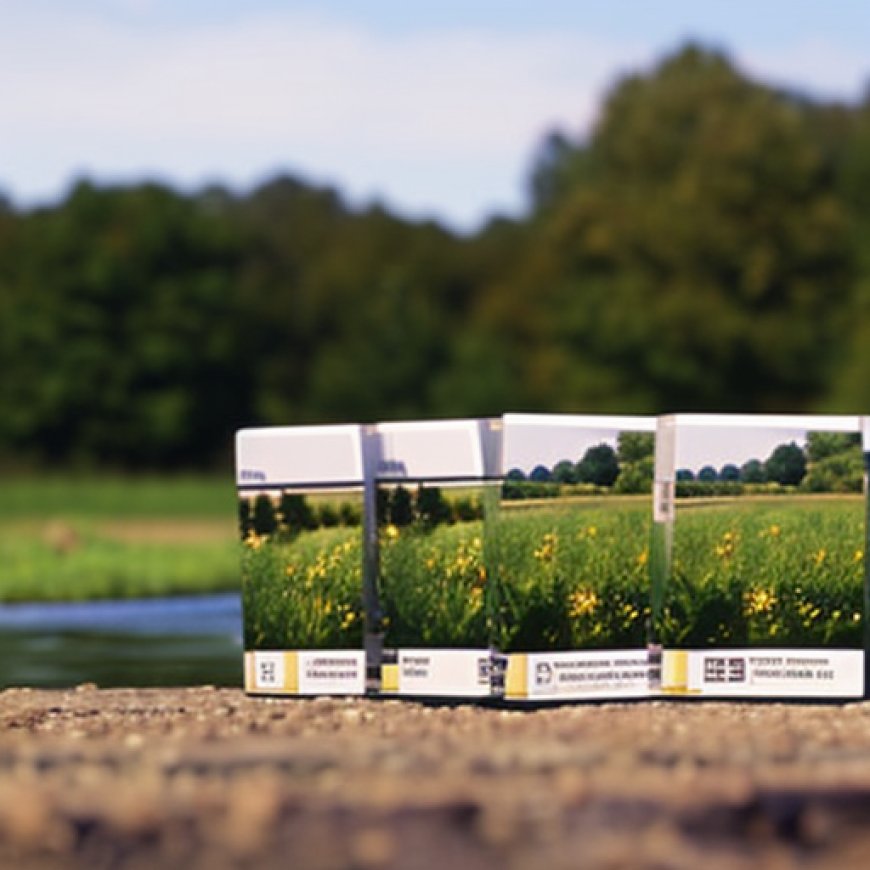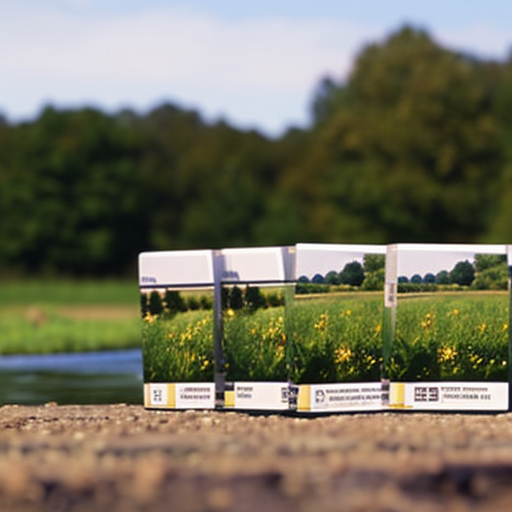Iowa NRCS sets Nov. 3 cutoff for Conservation Program applications – Cherokee Chronicle Times
Iowa NRCS sets Nov. 3 cutoff for Conservation Program applications Chronicle Times


Record Conservation Funding for Iowa Farmers and Private Landowners

The U.S. Department of Agriculture (USDA) officials are proud to announce that Iowa farmers and private landowners will receive record conservation funding in the coming year. This increase in funding is made possible, in part, by the Inflation Reduction Act.
The USDA’s Natural Resources Conservation Service (NRCS) accepts applications for conservation programs on an ongoing basis. However, application cutoff dates are determined based on available funding. The NRCS has recently set a cutoff date of November 3 for fiscal year 2024 Farm Bill conservation programs.
Iowa agricultural producers and private landowners who are interested in applying for NRCS conservation programs can do so by visiting their local NRCS office. Iowa is home to 100 NRCS field offices, which are located at USDA Service Centers.
Programs & Practices Available
The Inflation Reduction Act, which was signed into law in August 2022, will provide unprecedented funding levels for NRCS’ four primary conservation programs:
- Agricultural Conservation Easement Program-Wetland Reserve Easements (ACEP-WRE)
- Conservation Stewardship Program (CSP)
- Environmental Quality Incentives Program (EQIP)
- Regional Conservation Partnership Program (RCPP)
In addition to the traditional funding for soil and water conservation practices such as terraces, grassed waterways, and water and sediment control basins, the Inflation Reduction Act also includes targeted funding for climate-smart agriculture practices. These practices include no-till, cover crops, conservation cover, crop rotations, nutrient management, prescribed grazing, tree-shrub establishment, and windbreak-shelterbelt establishment.
For some EQIP and RCPP funding pools and projects, Iowa NRCS will utilize the ACT NOW process. Through ACT NOW, NRCS can immediately approve and allocate funding to applications that meet or exceed a predetermined minimum ranking score. This process will be in effect until March 15, 2024.
More about NRCS Conservation Programs:
ACEP (Wetland Easements)
Through the ACEP-WRE program, NRCS provides technical and financial assistance to private landowners and tribal entities for the protection and restoration of wetlands through the purchase of wetland conservation easements. Eligible land can be enrolled through permanent or 30-year easements.
Private landowners and tribal entities who are interested in this program can contact their local NRCS office for information on eligibility, application forms, and required ownership documents.
CSP
CSP helps agricultural producers enhance their operations while implementing conservation practices that promote sustainability. This program offers benefits such as increased crop yields, reduced inputs, improved wildlife habitat, and increased resilience to extreme weather conditions. CSP is designed for working lands, including cropland, pastureland, nonindustrial private forest land, and agricultural land under tribal jurisdiction.
EQIP
EQIP provides planning and financial assistance to implement various conservation practices, including no-till, cover crops, terraces, grassed waterways, nutrient management, manure management facilities, and pasture management.
The November 3 application signup cutoff also includes EQIP initiatives such as the National Water Quality Initiative (NWQI), Mississippi River Basin Health Watersheds Initiative (MRBI), Prairie Pothole Water Quality and Wildlife Program, Organic Initiative, High Tunnel Initiative, and On-Farm Energy Initiative.
RCPP
RCPP allows NRCS to collaborate with partners to implement projects that demonstrate innovative solutions to conservation challenges. These projects aim to achieve measurable improvements and outcomes related to resource concerns.
For a complete list of RCPP projects in Iowa, please visit: nrcs.usda.gov/programs-initiatives/iowa/RCPP.
To apply for NRCS conservation programs or to learn more about conservation planning and programs for addressing natural resource issues on your land, please contact your local NRCS office or visit www.nrcs.usda.gov/ia.
SDGs, Targets, and Indicators
1. Sustainable Development Goal: No Poverty
- Target 1.4: By 2030, ensure that all men and women, in particular the poor and the vulnerable, have equal rights to economic resources, as well as access to basic services, ownership, and control over land and other forms of property, inheritance, natural resources, appropriate new technology, and financial services, including microfinance.
- Indicator 1.4.2: Proportion of total adult population with secure tenure rights to land, with legally recognized documentation and who perceive their rights to land as secure, by sex and by type of tenure.
The article does not directly address the issue of poverty or the specific target and indicator under SDG 1.
2. Sustainable Development Goal: Zero Hunger
- Target 2.4: By 2030, ensure sustainable food production systems and implement resilient agricultural practices that increase productivity and production, that help maintain ecosystems, that strengthen capacity for adaptation to climate change, extreme weather, drought, flooding, and other disasters, and that progressively improve land and soil quality.
- Indicator 2.4.1: Proportion of agricultural area under productive and sustainable agriculture.
The article indirectly addresses the issue of sustainable food production systems and resilient agricultural practices through the mention of conservation programs and funding for climate-smart agriculture practices.
3. Sustainable Development Goal: Good Health and Well-being
- Target 3.9: By 2030, substantially reduce the number of deaths and illnesses from hazardous chemicals and air, water, and soil pollution and contamination.
- Indicator 3.9.1: Mortality rate attributed to household and ambient air pollution.
The article does not directly address the issue of hazardous chemicals or air, water, and soil pollution and contamination.
4. Sustainable Development Goal: Quality Education
- Target 4.7: By 2030, ensure that all learners acquire the knowledge and skills needed to promote sustainable development, including, among others, through education for sustainable development and sustainable lifestyles, human rights, gender equality, promotion of a culture of peace and non-violence, global citizenship, and appreciation of cultural diversity and of culture’s contribution to sustainable development.
- Indicator 4.7.1: Extent to which (i) global citizenship education and (ii) education for sustainable development are mainstreamed in (a) national education policies; (b) curricula; (c) teacher education; and (d) student assessment.
The article does not directly address the issue of quality education or the specific target and indicator under SDG 4.
5. Sustainable Development Goal: Gender Equality
- Target 5.a: Undertake reforms to give women equal rights to economic resources, as well as access to ownership and control over land and other forms of property, financial services, inheritance, and natural resources, in accordance with national laws.
- Indicator 5.a.1: (a) Proportion of total agricultural population with ownership or secure rights over agricultural land, by sex; and (b) share of women among owners or rights-bearers of agricultural land, by type of tenure.
The article does not directly address the issue of gender equality or the specific target and indicator under SDG 5.
6. Sustainable Development Goal: Clean Water and Sanitation
- Target 6.4: By 2030, substantially increase water-use efficiency across all sectors and ensure sustainable withdrawals and supply of freshwater to address water scarcity and substantially reduce the number of people suffering from water scarcity.
- Indicator 6.4.1: Change in water-use efficiency over time.
The article does not directly address the issue of water-use efficiency or water scarcity.
7. Sustainable Development Goal: Affordable and Clean Energy
- Target 7.2: By 2030, increase substantially the share of renewable energy in the global energy mix.
- Indicator 7.2.1: Renewable energy share in the total final energy consumption.
The article does not directly address the issue of renewable energy or the specific target and indicator under SDG 7.
8. Sustainable Development Goal: Decent Work and Economic Growth
- Target 8.5: By 2030, achieve full and productive employment and decent work for all women and men, including for young people and persons with disabilities, and equal pay for work of equal value.
- Indicator 8.5.1: Average hourly earnings of female and male employees, by occupation, age group, and persons with disabilities.
The article does not directly address the issue of decent work or the specific target and indicator under SDG 8.
9. Sustainable Development Goal: Industry, Innovation, and Infrastructure
- Target 9.1: Develop quality, reliable, sustainable, and resilient infrastructure, including regional and transborder infrastructure, to support economic development and human well-being, with a focus on affordable and equitable access for all.
- Indicator 9.1.1: Proportion of the rural population who live within 2 km of an all-season road.
The article does not directly address the issue of infrastructure or the specific target and indicator under SDG 9.
10. Sustainable Development Goal: Reduced Inequalities
- Target 10.2: By 2030, empower and promote the social, economic, and political inclusion of all, irrespective of age, sex, disability, race, ethnicity, origin, religion, or economic or other status.
- Indicator 10.2.1: Proportion of people living below 50 percent of median income, by age, sex, and persons with disabilities.
The article does not directly address the issue of reduced inequalities or the specific target and indicator under SDG 10.
11. Sustainable Development Goal: Sustainable Cities and Communities
- Target 11.3: By 2030, enhance inclusive and sustainable urbanization and capacity for participatory, integrated, and sustainable human settlement planning and management in all countries.
- Indicator 11.3.1: Ratio of land consumption rate to population growth rate.
The article does not directly address the issue of sustainable urbanization or the specific target and indicator under SDG 11.
12. Sustainable Development Goal: Responsible Consumption and Production
Behold! This splendid article springs forth from the wellspring of knowledge, shaped by a wondrous proprietary AI technology that delved into a vast ocean of data, illuminating the path towards the Sustainable Development Goals. Remember that all rights are reserved by SDG Investors LLC, empowering us to champion progress together.
Source: chronicletimes.com

Join us, as fellow seekers of change, on a transformative journey at https://sdgtalks.ai/welcome, where you can become a member and actively contribute to shaping a brighter future.







